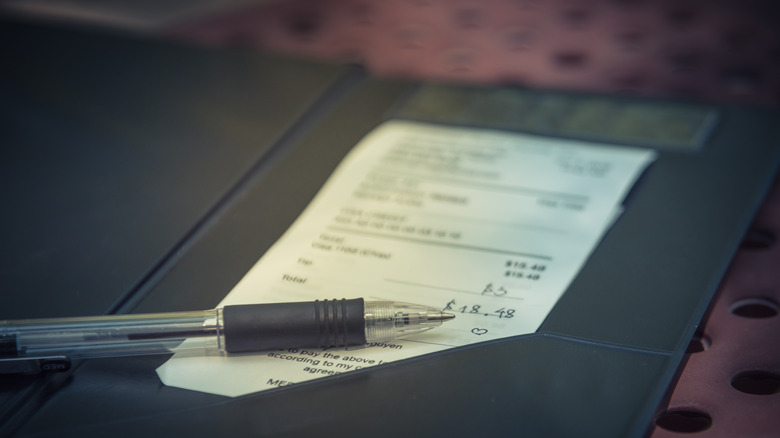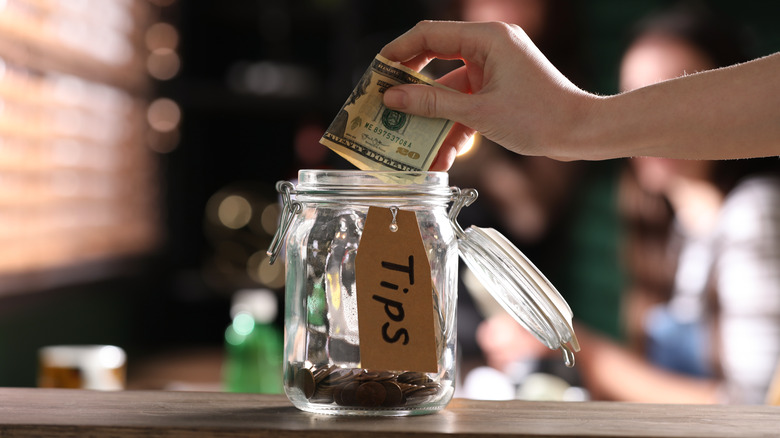Waiters Are Seeing Smaller Tips Than Before The Pandemic, New Data Reveals
We're now over two years into the pandemic, and the initial bump in appreciation toward food workers has dwindled to a point lower than that before the first lockdown.
According to data shared with Nexstar by Square, quick-service restaurants received an 18.57% average tip amount in August 2021, whereas they received a 22% average tip amount in April 2020. Similarly, full-service restaurants have dropped from tips of 21.2% to 19.12% during the same time period. During the early months of the pandemic, the average tip amount increased, exceeding 20% for both service type categories. According to Square, tipping amounts have remained mostly unchanged since August 2021, though it's notable that these averages are actually lower than what they were in January 2020, before the pandemic really spread in the United States.
Commenting on the findings to Nexstar, Joe Monastero, the Texas Restaurant Association's COO, expressed worries that the decrease in tip amounts could be due to customers taking out their frustrations on the servers. Typically, a tip is supposed to reflect the quality of service outside the context of the meal. But with labor shortages and increased menu prices, customers may be pinching their wallets to express their frustration with restaurants but, unfortunately, taking it out on waiters. Admittedly, a couple of percentage points might seem slight. However, for the people that rely on tips to supply them with a wage, it's effectively a pay cut — as much as 10%.
Tipping has become more commonplace
Though the restaurant industry servers have experienced lackluster tip amounts as of late, ironically, tipping as a general practice has become more prevalent during and since the pandemic. As Axios notes in its analysis of the Square data, in-person credit card transaction tips grew from 63% before the pandemic to 66% by August 2021. More strikingly, the number of times people paid remote tips, which is what takeout delivery service Uber Eats would count as, jumped from 46% pre-pandemic to 86%. Uber itself reports a 20-fold boom in tips given before the service is even completed. So, the pandemic's forcing people to order out (vs. dining in) changed the way many think about tips, to the benefit of service workers, overall.
This shift toward tipping could become further ingrained, despite the practice being questioned in the restaurant industry. Danny Meyer, whose New York restaurant company Union Square Hospitality Group famously did away with tipping, had to reinstate the practice because of the pandemic. Talking with The New York Times, Meyer expressed his belief that while restaurants and their workers struggle to make ends meet, he won't deny his waitstaff further wage opportunities via tips. Unfortunately, that method has to deal with the uncertainty of what else the customer is already paying and is willing to pay.

